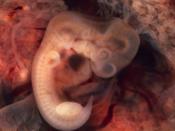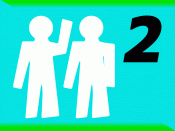The year was 1997. Ever since this year, marking the birth of Dolly, the first successfully cloned sheep, man has been in a debacle on whether or not to clone a human being (Evans 1). Imagine walking into class one day, only to find the entire room filled with people who strikingly resemble each other in every genetic way, from the strands of hair on their head to the sole prints of their feet. Telling all of them apart would take forever, not to mention the amount of confusion that would occur in the process of doing so. For the next few paragraphs, this paper will elaborate upon key points of the scientific, ethical and religious issues of cloning. Each one of these issues is relevant in a person choice on determining whether or not cloning should be implemented.
From a scientific point of view, many quickly conclude that the ability to clone a human being by "nuclear or stem cell transfer" can be implemented by using technology that is relatively so simple, that almost every "inexperienced but determined embryologist with limited resources can perform human cloning" (Fiddler, Toydemir & Pergament 1).
Through mass media, there have been several claims by small research groups in the scientific community that though they know the evident biological risks to animal cloning, are still publicizing that safe methods to human cloning are close at hand (1). Though this is the case, results in cloning on many animal species have remained unsuccessful and disastrous, such as in mice, where many fetuses and offspring have turned out grossly deformed (Edwards 399). Dolly, the first exclusively cloned sheep, has seemingly died prematurely from an advanced stage of arthritis (Fiddler, Toydemir & Pergament 1; 399). The reasons for this outcome of events will be discussed more vividly...


